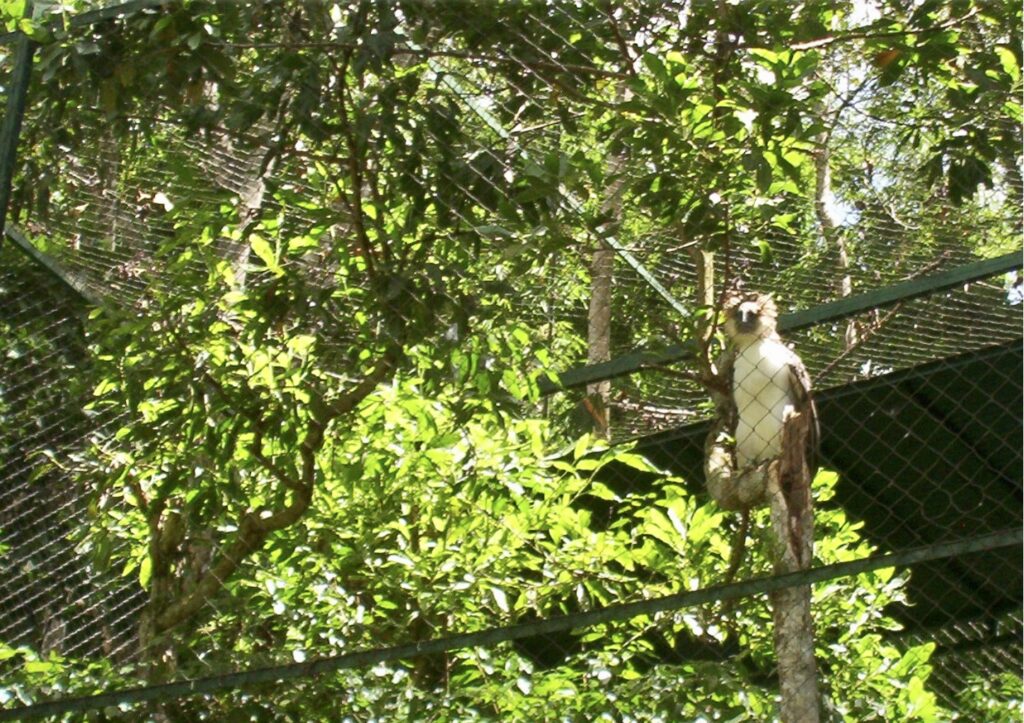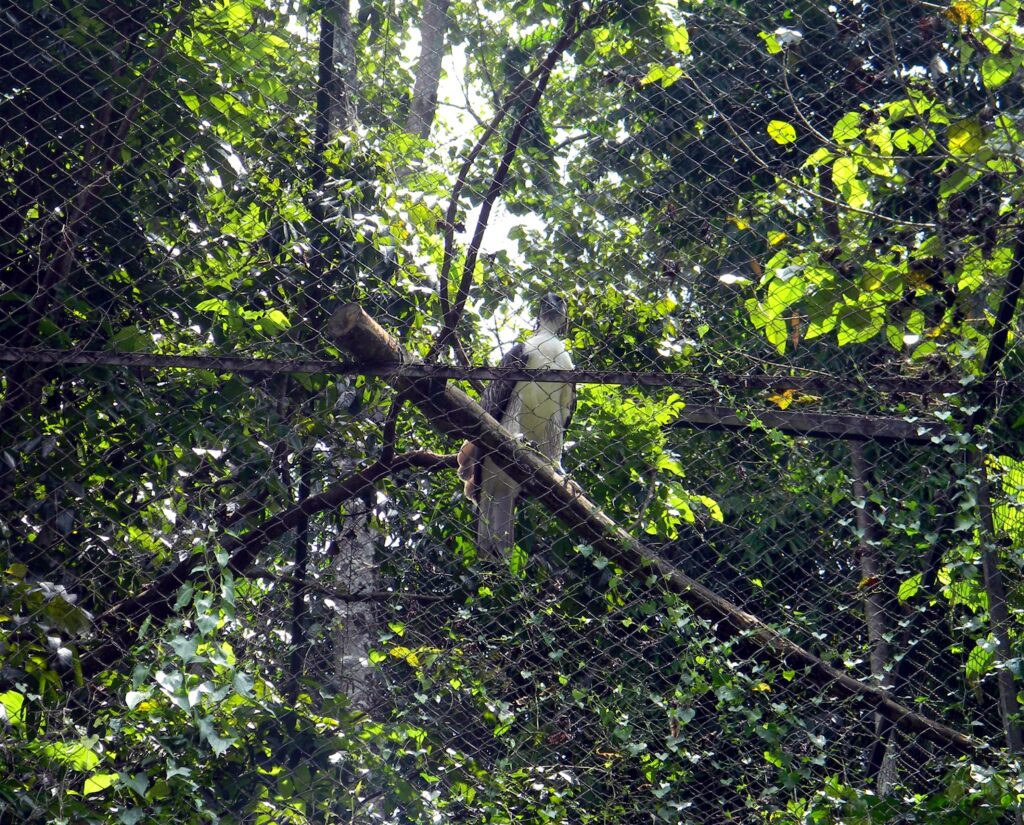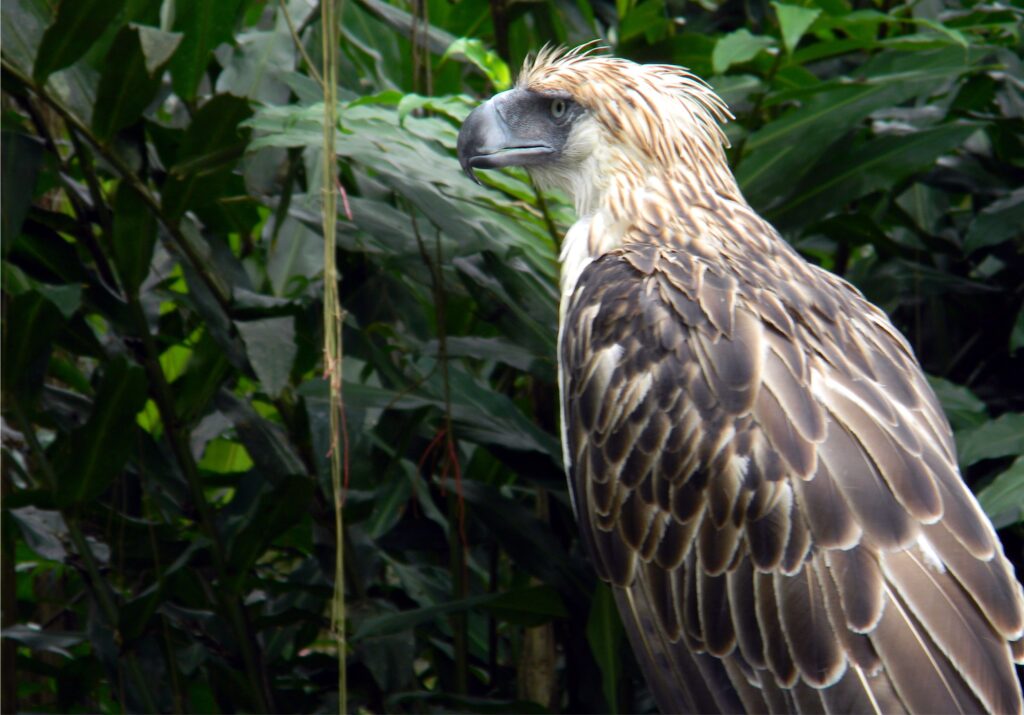THE END OF AN ICONIC BIRD
Text and Photos by Henrylito D. Tacio
When Pag-asa (which means “hope” in Tagalog) was born on January 15, 1992, the world rejoiced. After all, the bird was the first-ever tropical eagle born in captivity using cooperative artificial insemination (CAI) techniques. He was the result of a long and tedious work of the Philippine Eagle Foundation (PEF) to save this very rare bird found only in the Philippines.

“Pag-asa connotes hope for the continued survival of the Philippine eagle, hope that if people get together for the cause of this national icon, it shall not be doomed to die,” says Dennis Joseph I. Salvador, the PEF executive director.
But just nine days short of his 29th birthday, Pag-asa died. In a statement released to the media, PEF said the iconic bird succumbed to infections associated with Trichomoniasis and Aspergillosis, both fatal for raptors.
“Trichomoniasis is an infectious disease of birds caused by the single-celled protozoan Trichomonas gallinae,” explains the website of the Pennsylvania Game Commission. “There are several different strains of this protozoan, some of which cause clinical disease, while some of which do not.”
One of the oldest known wildlife diseases with written records dating back to the 1500s, the parasite is transmitted from one bird to another in three ways: infected parents feeding young, contaminated drinking water, and the infected bird is a prey meal for another bird.
“The third method of transmission is more common to birds of prey,” Wikipedia states. “An infection may be established in a raptor that has fed on an infected prey bird.”
Aspergillosis, on the other hand, is a fungal infection that commonly causes respiratory disease. “This slow-growing fungal infection gradually damages tissues in the body over a period of weeks to months, often with little obvious evidence of illness until an organ or system is severely compromised,” wrote Dr. Rick Axelson, an American veterinarian, in the website, vcahospitals.com.
The fungal infection is not contagious from bird to bird. “It more commonly affects birds whose immune systems have been compromised by other diseases or by malnutrition,” Dr. Axelson explained. “Birds with healthy immune systems may be exposed to Aspergillus spores and not develop an infection.”
However, even healthy birds exposed to a large number of the spores (in dust, mold, and soil, among others) may be infected, he said.

“Although treatment was done over a week ago, (Pag-asa) continued to deteriorate and died at 8:03 pm on January 6,” the statement said.
It is common knowledge now that Pag-asa was the product of carefully orchestrated teamwork based on a study for 14 years of eagle behavior, both in the wild and in captivity. But what Pag-asa equally significant was that two captive eagles, male (Junior) and female (Diola), were induced by humans to reproduce.
Many pioneering efforts in the past failed to breed certain endangered species in captivity. According to Salvador, breeders of captive eagles and other birds find it a herculean task to induce captive birds to reproduce. Many factors like food, protection, and nesting needs have to be considered.
Philippine eagles take 5-7 years to sexually mature, the PEF says. “It only lays a single egg every two years,” the foundation states. “They wait for their offspring to make it on their own (usually within two years) before producing another offspring.”
In the wild, the egg is incubated alternately by both eagle parents for about 58-60 days, with the male eagle doing most of the hunting during the first 40 days of the eaglet’s life while the female stays with the young.
“Years after he was hatched, the PEF reached yet another milestone with Pag-asa in the form of his first and only offspring,” the statement said. “She was named Mabuhay and was also bred and hatched through CAI.
“Even after he retired from breeding, Pag-asa lived his life as an icon of hope for Filipinos, young and old, and was a constant inspiration to the people working tirelessly to save our National Bird from extinction.”
The Philippine eagle was formerly known as the monkey-eating eagle (its generic name, “Pithecophaga”, which comes from the Greek words “pithekos” or monkey and “phagein” meaning eater). It was later renamed the Philippine eagle under the Marcos administration after it was learned that monkeys comprise an insignificant portion of its diet, which consists mainly of flying lemurs, civet cats, bats, rodents, and snakes.
Efforts to save the Philippine eagle were started in 1965 by Jesus A. Alvarez, then director of the autonomous Parks and Wildlife Office, and Dioscoro S. Rabor, another founding father of the Philippine conservation effort. American aviator Charles Lindbergh spearheaded a drive to save the bird from 1969 to 1972.
In July 1995, then-President Fidel V. Ramos signed Proclamation No. 615 naming the Philippine eagle as the country’s national bird. He said that the eagle is found only in the Philippines and as such should be a source of national pride.
“If the national bird dies,” Ramos said at that time, “so will all the country’s efforts at conserving its natural resources and treasures.”

“The Philippine eagle is the largest predator we have,” Salvador said. “By using the Philippine eagle as the focal point of conservation, we are, in the process, saving wildlife and their habitat.”
The Philippine Eagle Center is located in a far-flung area in Malagos of Calinan District in Davao City. It takes almost an hour to travel from the heart of the city to the center, where visitors get to encounter Philippine eagles placed in cages.
Watch This Video:
Primarily a research facility, the Philippine Eagle Center is nestled at Mount Apo’s rolling foothills, the country’s highest peak. Several Philippine eagles have been raised as part of the foundation’s breeding program. Most of them are being induced to breed in captivity.
